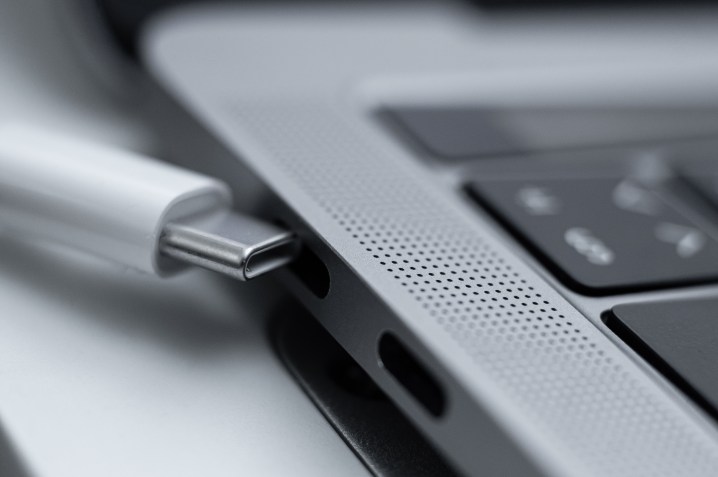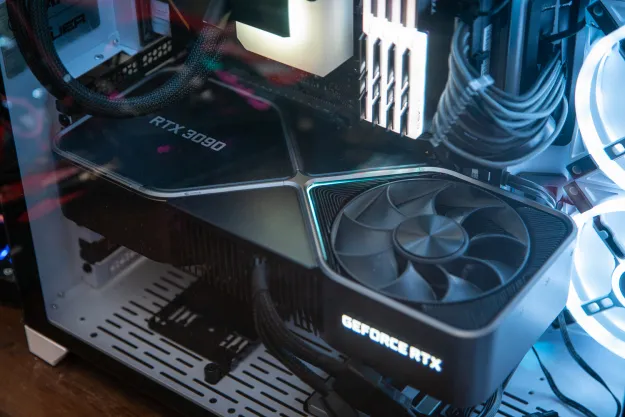You can charge your laptop with USB-C and many laptops are built with it as their only option for charging. You’ll need a high-wattage charger to power it up in a reasonable time, but thanks to the latest generations of USB Power Delivery technology, you can absolutely charge your laptop with a USB-C connection.
You don’t even need one of the best laptops to charge using USB-C. Most modern laptops have the option. That’s great, too, because USB-C is reversible, handles data and charging simultaneously, and can even let you output to a display while charging your laptop from the same USB-C cable. Here’s how to do it.
How to charge your laptop with USB-C

The latest generations of USB-C connection can handle far higher wattage than the earlier generations, making them a great solution for charging your laptop — if it supports USB-C charging. You can find out if yours does by checking the manual, or the manufacturer’s website. If your laptop’s included charger has a USB-C connection, though, that’s the biggest clue!
To charge your laptop with a USB-C charger, just plug it in. However, you can’t just use the same charger you have for your phone. Those tend to be low wattage — even the fast charging ones — and laptops are bigger, more powerful devices, so need a more powerful charger in order to charge in a reasonable time. If you’re interested in buying a USB-C charger to use with your laptop, you’ll want at least a 45W charger, though 65W and even 100W chargers will charge it faster.
Will any port work with any charger?

Although USB-C is a reversible, and somewhat universal connection in that it’s compatible with any other USB-C connection — including USB4 and Thunderbolt 3 and 4 — not all USB-C ports and not all USB-C chargers are created equally. Laptops with multiple USB-C ports will tend to have one that is designed for charging. Plug your USB-C power cable into that port to charge your laptop.
Some devices specifically don’t allow the use of third-party chargers in order to guarantee the right power delivery. That’s not the case for most, though, and a suitable USB-C charger or even a power bank will also work as a laptop charger. You can also use charging hubs and docking stations that include USB-C charging, though they are just as focused on giving you access to a wider range of ports and connection options.
While we haven’t personally heard of any damage from using a USB-C charger other than the one that came with your laptop, there’s always a slim risk when plugging a laptop into an unknown power source. Faulty cables can also be a problem. Microsoft says that you can charge a Surface device with a USB-C port, but it’s highly recommended that you use the Surface charger that came with the laptop.
In short, it’s a good idea to buy cables and chargers from reputable sources and think twice about using that cable you found laying on the ground in a conference room.
You will also want to watch your USB-C power mode. You can find it in your laptop settings, usually in the power/battery section. Here, you may find that you can switch Type-C’s output, choosing whether to receive power or send power. If your USB-C laptop charger isn’t working when by all rights it should be, check your settings to make sure it is set to receive power.
What wattage are USB-C cables?
There are a few different types of USB-C connections your charger and laptop can have, and they each have support for different USB Power Delivery technologies, with various maximum wattages. Here’s a breakdown of the different types of USB-C connections and what their wattage range can be:
| USB-C generation | Wattage support |
| USB-C 3.2 Gen 2×2 | Minimum 4.5W, Maximum 100W |
| USB4 | Minimum 7.5W, Maximum 240W |
| Thunderbolt 3 | Minimum 15W, Maximum 100W |
| Thunderbolt 4 | Minimum 15W, Maximum 240W |
The specific supported wattage of each USB-C cable, charger, and supporting device, varies. You’ll need to look at their specifications before buying to confirm, but depending on the connection in question, they should fall within these ranges.
However, Thunderbolt 4 certification also demands that at least one port on any device supporting Thunderbolt 4 supports 100W charging, so you can rest assured you should have at least that on any device that supports
Frequently asked questions
Do all USB-C ports allow charging?
Although USB-C is often the go-to standard for charging, not all USB-C ports can charge your laptop. Laptops designed for USB-C charging tend to have one port that’s designated for charging, while the others are reserved for data.
Can I charge my laptop via USB-C?
If your laptop supports USB-C charging, then you can. If it doesn’t, you can’t. Check the manual or the manufacturer’s website to find out if your laptop supports it.
Is USB-C charging better?
Charging your laptop over USB-C isn’t inherently better than using a bespoke power brick and cable, but it is a lot more streamlined. It lets you have one cable type that you can swap out if it dies, and you can often use a single charger for multiple devices. USB-C is also reversible, durable, and offers high-speed data transfer and video transmission, too.
Can USB-C let you charge your laptop without a charger?
Yes, and no. You still need a charger of some kind to provide power for your laptop. However, as long as your laptop comes with a USB-C port that was specifically designed to supply charging support, then you can charge it without a regular charger. However, as we mentioned above, not all laptops offer USB-C ports that you can utilize in order to charge your device.
Editors' Recommendations
- ChatGPT: the latest news, controversies, and tips you need to know
- What is GDDR7? Everything you need to know about next-gen VRAM
- Apple M2 Ultra: everything you need to know about Apple’s most powerful chip
- This wild, screenless AR laptop gives you a 100-inch virtual display
- Some Ryzen CPUs are burning up. Here’s what you can do to save yours





